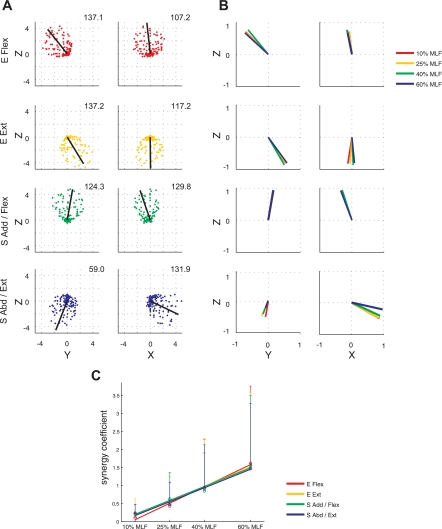Fig. 7.
Synergy recruitment associated with performance of the spatial and load protocols by a representative subject (S4). A: each circle represents the endpoint of a vector in the generated force direction, whose amplitude corresponds to the activation coefficient for the associated, color-matched synergy (displayed in the 1st column of Fig. 5). The 3-D resultant of the activation vectors for each synergy, characterizing the “preferred” direction of synergy activation, is indicated by a black line. The number in the upper right corner of each 2-D subplot indicates the amplitude of the resultant of the activation vectors for each synergy. B: unit vectors representing the preferred direction of each synergy's activation for 4 force levels. The display sequence of the 4 synergies is matched to A. The spatial tuning of synergy activation was similar across force levels (P < 0.05). C: activation of synergies extracted from pooled (across load levels) datasets, scaled linearly with load level, suggesting that 4 synergies with appropriately scaled activation can reconstruct EMG patterns across different target force amplitudes.

